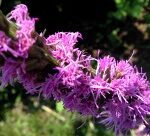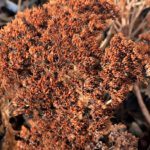all the pretty colors
The leaves are colored by three types of pigments: chlorophyll, which keeps them green during the warm season, carotenoids, which make them look yellow or orange, and anthocyanins, which turn them red and purple. These three pigments are present all the time, but the last two are masked by the chlorophyll, which is dominant. The leaves produce additional quantities of anthocyanins before they fall, for reasons which are not absolutely clear.
Chlorophyll is photo-toxic in free form, so the plant decomposes it into safe components which serve physiological roles.
If you ever wondered if there is a scientific term for leaves changing color, there is, and it’s called senescence.
How do leaves decide when it’s time to start turning? Some get triggered by the amount of daylight available, others respond to cooling temperatures and rain, most often they react to a combination of factors, which include the two above, but also the health of the plant, the amount of cloud cover, whether it’s in the sun or in the shade.
Brown color is the result of waste products trapped in the leaves.
Sunny days and cool nights favor anthocyanin production, thus turning foliage bright red, whereas overcast skies make it less active, resulting in yellow and orange colors.




 Previous Post
Previous Post Next Post
Next Post




